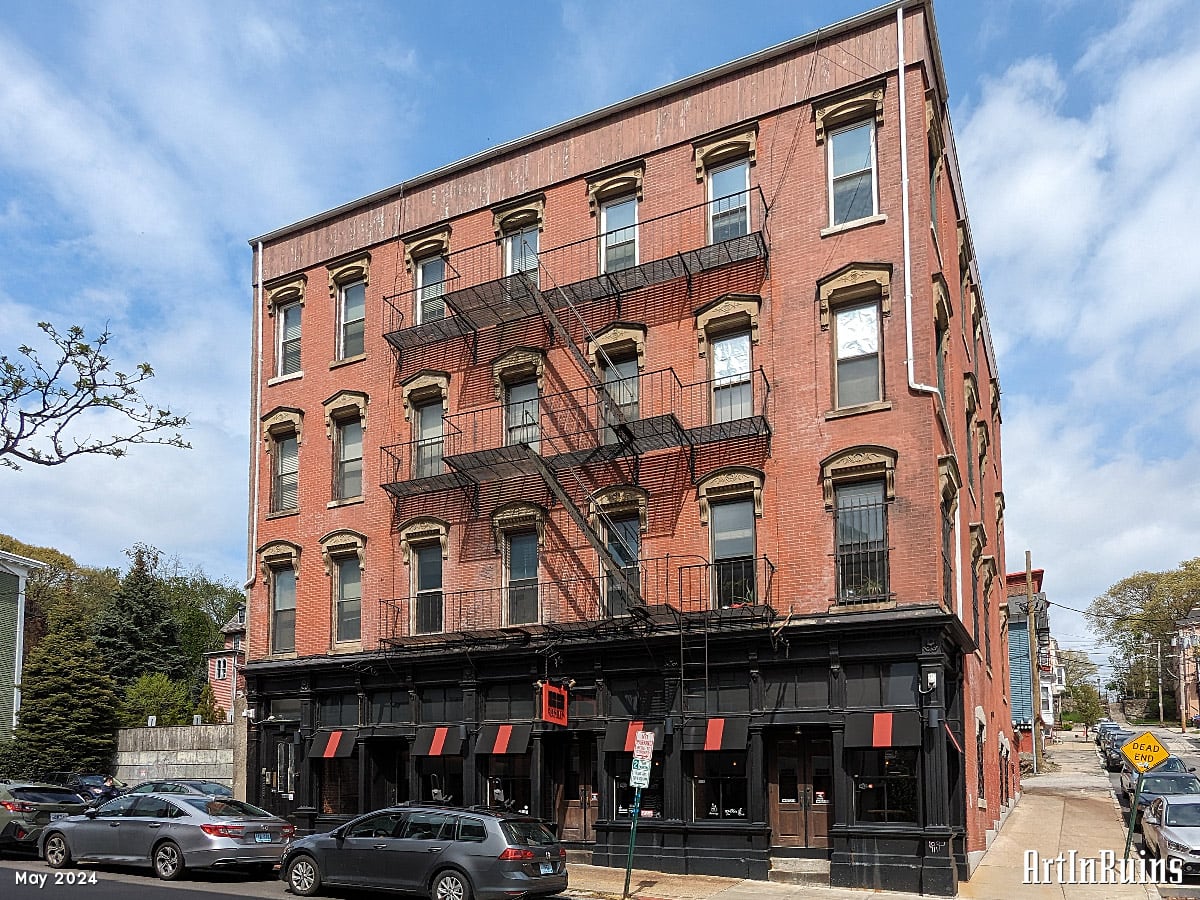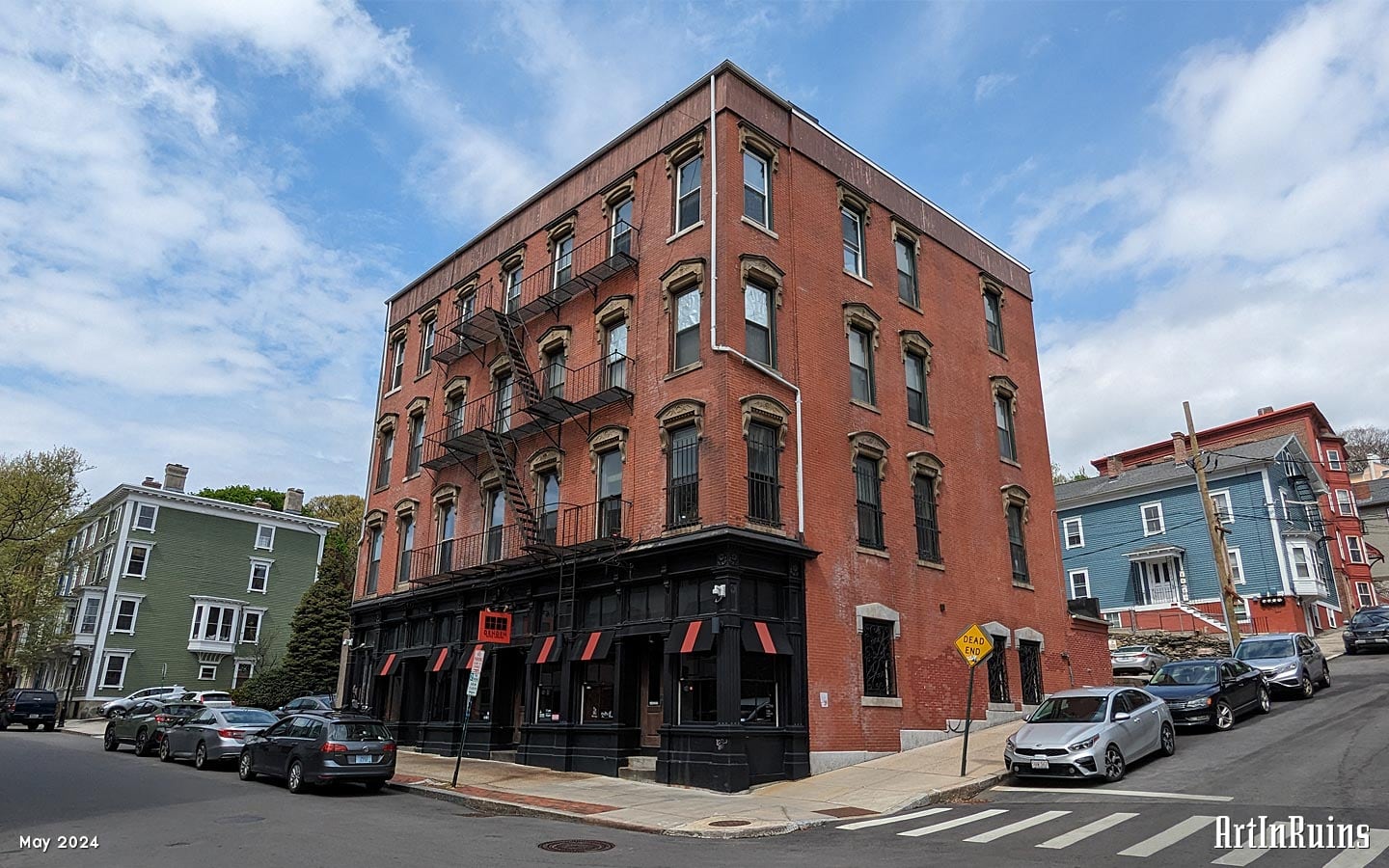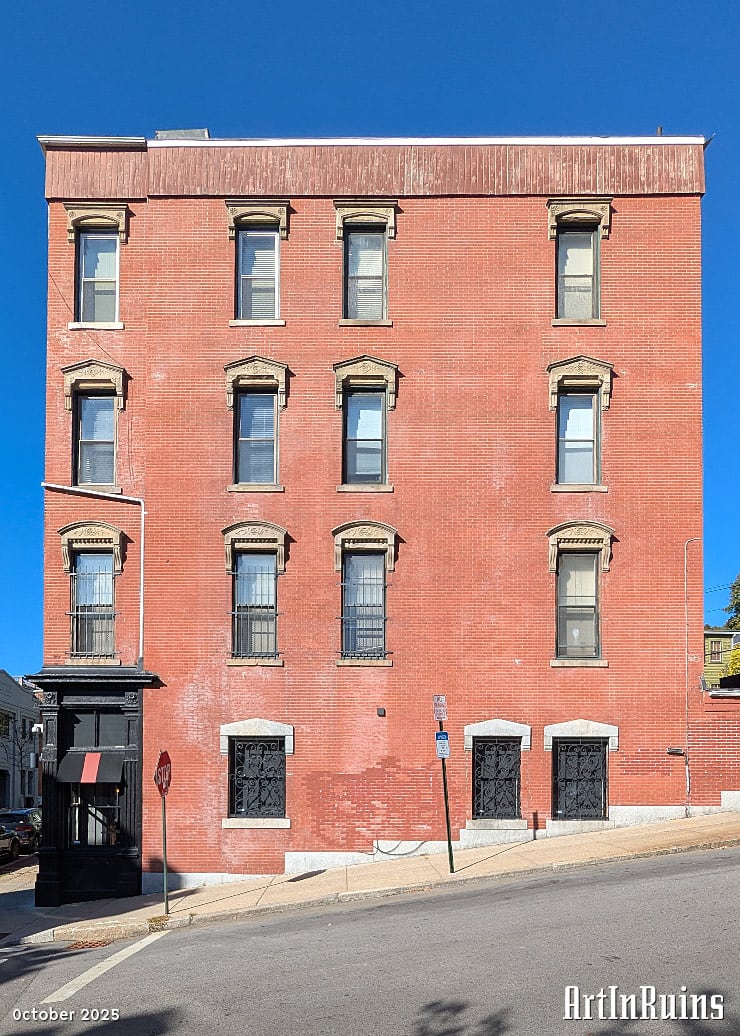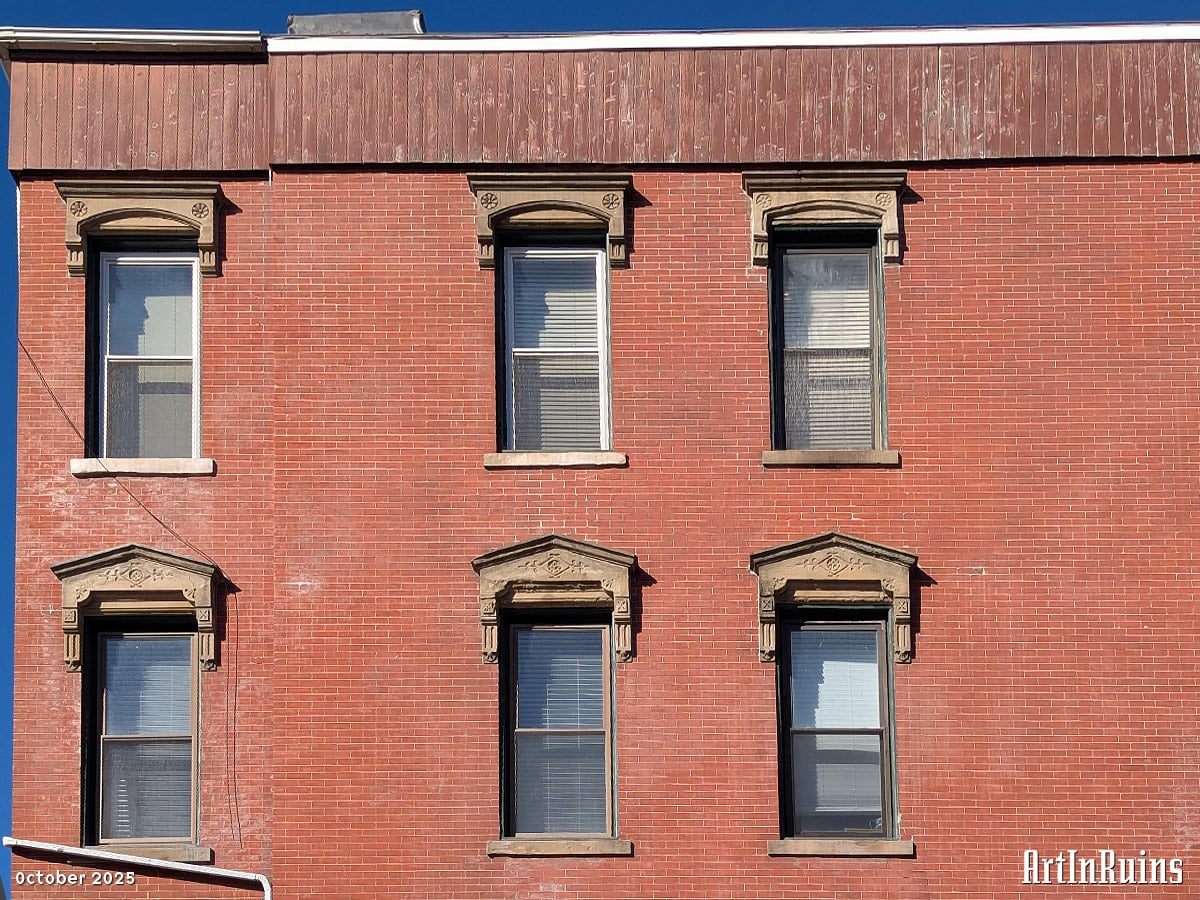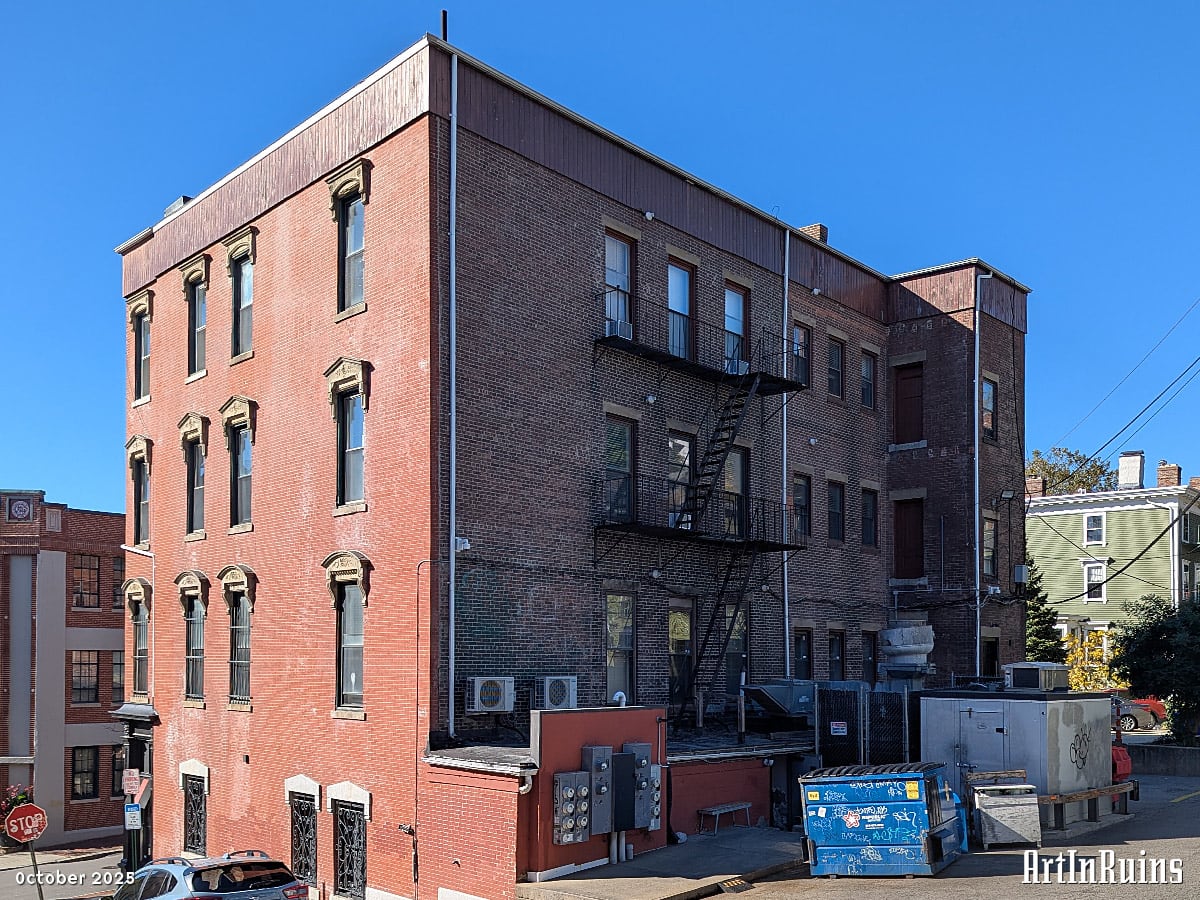George R. Earle Building
A four-story apartment building with first floor cast-iron store fronts has a rich 150 years of history
images of this Property
-
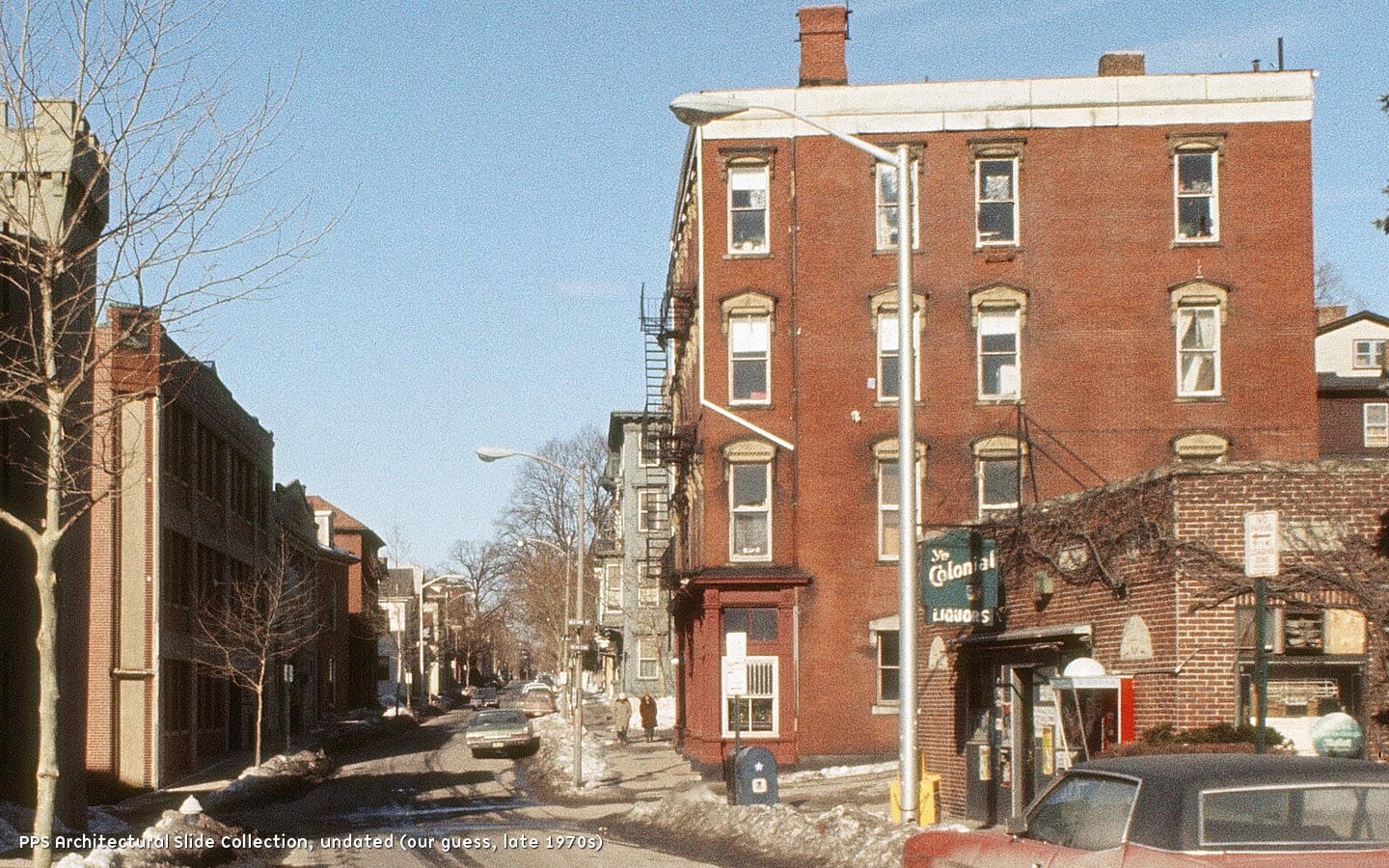
Undated — PPS Architectural Slides Collection. Our guess is late 1970s; Ye Colonial Liquors stopped being listed after the 1978 Polk’s Providence almanac -
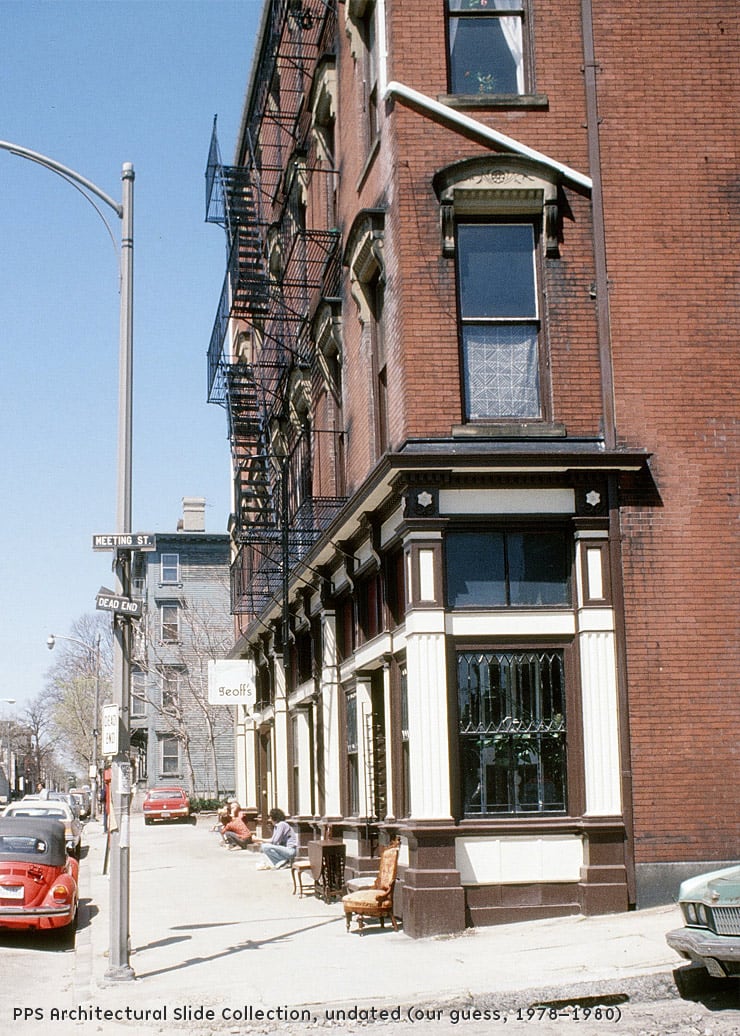
Undated — PPS Architectural Slides Collection. Our guess is late 1970s; Furniture is outside of 167, and the Old Vic antique store was last listed in Polk’s Providence for 1978; Geoff’s was first listed in 1980 but a Providence Evening Bulletin articles says they opened in 1977 -

Undated — PPS Architectural Slides Collection. Our guess is 1979 or 1980; Ye Colonial Liquors is not in the 1980 Polk’s Providence almanac but Geoff’s is listed -

Undated — PPS Architectural Slides Collection. Our guess is 1986–1990; Mutta Pizza’s sign is present, they occupied 167 from 1980 to 1990; and that looks like a first or second generation Ford Taurus, which was first sold in 1985 -
![]()
-
![]()
-
![]()
-
![]()
-
![]()
-
![]()
-
![]()
11 images: Press to view larger or scroll sideways to see more. Contributions from the PPS Architectural Slides Collection
About this Property
Redevelopment
This block has been apartments above with first floor storefronts along Benefit Street since the 1890s. It has had a colorful history, along with its builder and original owner, George R. Earl.
Architecture
A four-story red brick apartment building with a cast iron first floor storefront. The northern side of the facade has a recessed doorway for the apartments above; then a pattern of window-door-window bay repeats three times.
Windows are rectangular with decorative lintels, slightly different on each floor — the second features rounded lintels, third has gable pitched lintels, and the fourth has flat. Each lintel is raised off the face of the building with decorative brackets on either side and a decorative inscription in the center.
The building cornice seems to have long been stripped or was never present. It is odd to think a relatively stately building has no copper cornice, so we are guessing it was stripped as scrap at one point, or damaged and never replaced.
Current Events
The parent company for Den Den Café Asiana, Den Den Ventures, Inc., owns the building according to city tax records (checked in 2025). Den Den Café Asiana restaurant has occupied the commercial storefronts since around 2016 and Geoff’s moved out between 2017 and 2019.
History
From Providence Preservation Society’s Guide to Providence Architecture, captured 09 November 2025
When George R. Earle decided to construct the building at what is now 161-167 Benefit Street in 1876, he was already living in and running the hotel next door at 159 Benefit Street, the Mansion House Hotel. The Mansion House, originally named the Golden Ball Inn, opened in the 1780s. Dozen of early American leaders — from John Adams to Thomas Jefferson and George Washington — passed through the front doors and spent some time at the hotel.
George Earle first shows up as hotel keeper in the 1850 census, when he was 26 years old. He would go on to get married, construct the building which now bears his namesake, and raise his children there — he worked for and lived in the hotel for more than half a century. Unfortunately, the hotel began to fall from popularity at some point during that time. In 1850, the hotel appears to have been staffed by more than a dozen servants and waiters, including a mixture of Irish-born immigrants and Americans. By 1900, the once bustling staff had been reduced to a mere three people: 60-year-old Ellen Flanagan, a cook; 33-year-old Mary Talbot, a chambermaid; and 25-year-old Mary McManus, a waitress.
George Earle was also renting his space in the hotel at this time. In the 1880s, George defaulted on his mortgage and ownership of the entire Mansion House Estate, including the George R. Earle building, was tossed around to a few different buyers. For a couple of decades, it was owned by Sidney F. Adams, a butcher who had been a tenant there for several years.
The original Mansion House remained a hotel, but the George R. Earle building became mixed-use apartments and retail space sometime in the 1890s. George Earle left his post as hotel keeper sometime between 1900 and 1910. He died in 1912.
In 1941, the adjacent hotel building at 159 Benefit Street was torn down, and it has served as a parking lot ever since.
From the College Hill Historic District nomination form, Edward F. Sanderson & Keith N. Morgan, January 1976
George R. Earle building, 1875-7. Victorian Commercial block: 4 stories; flat roof; brick with stone window pediments with incised ornament; first story cast-iron store front.
Polk’s Providence
Instead of listing the almanacs and which businesses appeared, we are listing each business and the almanac years they appear in. The earliest almanac we used with business details is 1930. From 1930 to 1960, addresses must be looked up individually. Starting in 1962, all occupants are listed by street and number towards the back half of the books.
- Agnes Howarth Boarding House
- 161 Benefit St; 1930
- Mina Doane, Lodging House
- 161 Benefit St; 1932, 1934, 1940
- William Buononno, Lodging House
- 161 Benefit St; 1942, 1944
- Marjorie M Fraser, Lodging House
- 161 Benefit St; 1946, 1948, 1950, 1952, 1954
- Fraser Apartments (along with 34,110, 119, and 138 Benefit St)
- 161 Benefit St; 1960
- Albert Hill Variety (grocer)
- 163 Benefit St; 1930, 1932, 1934, 1940, 1942, 1944
- Cecil C Hutchinson, Grocer
- 163 Benefit St; 1946
- Hilda Hutchinson, Grocer
- 163 Benefit St; 1948, 1950, 1952, 1954, 1956, 1960
- Alf Hutchinson, Grocer
- 163 Benefit St; 1962, 1964
- Cota’s Market
- 163 Benefit St; 1966
- Smith’s Market
- 163 Benefit St; 1968
- Joe’s Restaurant
- 163 Benefit St; 1970, 1972
- Joe’s Old Abandoned Grocery Store
- 163 Benefit St; 1976, 1978
- Geoff’s on Benefit
- 163 Benefit St; 1980, 1985, 1990, 1993, 2002, 2004, 2010
- Florentine Art Studio, Concetta DeFelice
- 165 Benefit St; 1932
- Harry S. Steiner, Tailor
- 165 Benefit St; 1942, 1944, 1946, 1948, 1950, 1952, 1954, 1956
- Levine & Son, Cleaners
- 165 Benefit St; 1962, 1964, 1966, 1968, 1970, 1972, 1976, 1978, 1980, 1985
- Wyatt’s Rotisserie Delicatessen
- 165 Benefit St; 1993
- Somewhere after 1993 but before 2002, the 163 space was absorbed into the 167 space
- East Side Employment Office
- 167 Benefit St; 1930, 1932, 1934, 1940, 1946, 1948, 1950
- The Owl’s Head, restaurant
- 167 Benefit St; 1960
- Old Vic Antiques
- 167 Benefit St; 1964, 1966, 1968, 1970, 1972, 1976, 1978
- Mutta Sicilian Pizza
- 167 Benefit St; 1980, 1985, 1990
- Checker’s Pizza
- 167 Benefit St; 1993, 2002, 2004
Our list of directories can be found on our research resources page.
In the News
End of a Dream
by Sonya F. Gray
Providence Journal | December 7, 1977 (abridged)
A dream died today as the gleaming stainless steel pie racks, bread boxes, trash bins from the New York World’s Fair and meat and cheese slicer of Joe’s Upstairs-Downstairs Restaurant on Fountain Street went on the auction block to satisfy unpaid debts to the federal Small Business Administration.
And along with the dream went memories of dill pickles (freebies) and the thick sandwiches called the likes of “Mad Dog” and “Bebe Rebozo” that were the hallmark of the no-defunct restaurant started by Edward “Dewey” Dufresne, Jr. […]
An SBA spokesman said today proceeds from the auction of 181 items would go toward an October, 1975, $160,000 loan which is still outstanding to the tune of “six figures.” […]
The restaurant operation — actually three restaurants (Upstairs, Downstairs, and Benefit Street) — close last June when a spokesman said the company was insolvent and attempting to sell or bring in new investors.
The equipment on Benefit Street was auctioned off during the summer. Geoffrey Tapper, who had been Dufresne’s meat supplier, negotiated a new lease.
The Benefit Street restaurant is now Geoff’s deli sandwich shop, and the Fountain Street location is only a chilly memory of times when one could “Eat at Joe’s.”
— Captured 09 November 2025 from News Bank.

